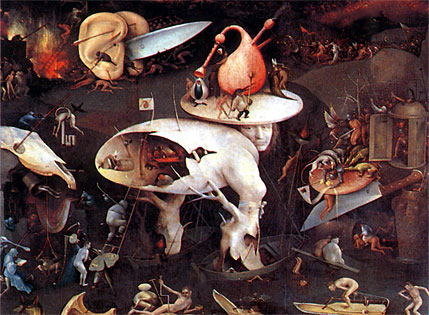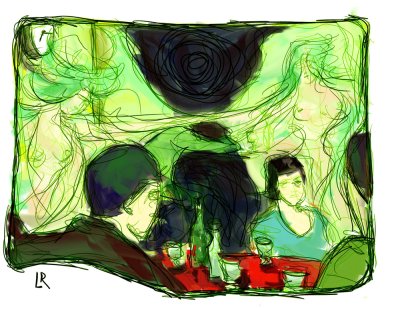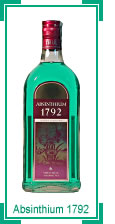Hell (circa 1490)
“If by fire Of sooty coal th’ empiric alchymist Can turn, or holds it possible to turn, Metals of drossiest ore to perfect gold.” John Milton
It’s a hell of a time to be in the absinthe business! New brands are coming out quicker than you can chant a Satanic rite. Absinthe for me has always been a little bit of Heaven…but it seems the media’s plastic devil in makeup wants in on the action.
The trumpets are sounding and the Marilyn Manson Mansinthe hype is upon us! The Antichrist of Absinthe has arrived! Or has he? You not only get a bottle of Mansinthe, you get a label which features a picture created by cheeky Brian Hugh Warner himself. What really made me cringe was the 66.6% alcohol content. Heaven save us from the machinations of those devils in suits… advertising executives!
It’s nice to know that these bottles of devil juice are being knocked out by the very same conservative Swiss distiller (Matter-Luginbühl) also making this new cocktail absinthe (Marteau Verte), from the holier than thou pony tailed founder of the Wormwood Society. Strange bedfellows indeed…but with a common parent.
Who will jump on the bandwagon next? Perhaps we should watch out for Loch Ness Absinthe – created by a little known Scottish hermit, inspired by the green monster of the loch, and a secret recipe book once owned by Lady Macbeth?
Prototype 35 of his absinthe, the wonderfully named Mansinthe, has sold out despite being priced at close to $1000 a bottle.
😯 I was recently offered a few rare original bottles of 100mg thujone Century Absinth (2005) for a figure not dissimilar to that…so I’ll probably go for that classic over a bottle of vapid publicity bubbles, and a depressing label painted by Mr Manson.
“My vice is absinthe. I don’t know so much about its repercussions.”
👿 I suppose that Marilyn Manson should pay a visit to one of the many modern day “absinthe professors” who will enlighten him.
The original absinthe professors frequented the bars and cafes of Fin de Siecle Paris, advising people on how to properly prepare an absinthe. They gave this instruction in return for a glass – nice work if you can get it! Modern day “absinthe professors” frequent absinthe forums, and turn nasty if you ask inconvenient questions about thujone. Thujone is the closed gate to real absinthe sales in the USA – but some say it’s the gateway to the real mystery of absinthe.
“Marilyn Manson may not know his Nietzsche from his Nazis, but he has had the commercial savvy to make a success of his nihilist schtick, writes Antonella Gambotto-Burke | September 29, 2007“















